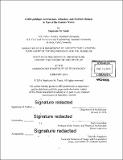| dc.contributor.advisor | Mark Jarzombek. | en_US |
| dc.contributor.author | Tuerk, Stephanie Marie | en_US |
| dc.contributor.other | Massachusetts Institute of Technology. Department of Architecture. | en_US |
| dc.coverage.spatial | e-fr--- | en_US |
| dc.date.accessioned | 2016-07-01T18:45:07Z | |
| dc.date.available | 2016-07-01T18:45:07Z | |
| dc.date.copyright | 2016 | en_US |
| dc.date.issued | 2016 | en_US |
| dc.identifier.uri | http://hdl.handle.net/1721.1/103491 | |
| dc.description | Thesis: Ph. D. in Architecture: History and Theory of Architecture, Massachusetts Institute of Technology, Department of Architecture, 2016. | en_US |
| dc.description | Cataloged from PDF version of thesis. | en_US |
| dc.description | Includes bibliographical references (pages 276-298). | en_US |
| dc.description.abstract | This dissertation documents how the aesthetic dimension of architecture came to be seen as an object of public utility in late nineteenth and early twentieth century France. It examines the work of a network of architects, artists, political representatives, art critics, poets, archaeologists, pedagogues, and other intellectual elites, who argued, through journals, pamphlets and books, and various legislative debates, that architecture's aesthetic capacity could both remedy public problems and reform the public itself. The study casts these "aesthetic reformers" as motivated not only by a wish to serve the public, but moreso by a desire to serve architecture itself, rehabilitating its social status through claims to its own utility. Drawing forth the influence of contemporary theories of philosophical aesthetics, psychology, and pedagogy on these aesthetic reformers, I demonstrate how they concluded that architecture's social utility lay in its ability to improve the morality of the French public. The project argues that this conclusion accordingly reoriented architecture's focus to from the building itself, to the city, and finally to entirety of the environment over the course of approximately forty years, as architecture became increasingly invested in its relationship to the public. I substantiate this argument through studies of private associations and societies which collectively sought to intensify the aesthetic affect of the built environment through the preservation of both buildings and natural features, the promotion of architecture as a form of art for the public, and the new practice of urban planning. In bringing this moment when architecture's aesthetics were conceived as public utility to light, my study offers a new genealogy of the idea that architecture could better society. | en_US |
| dc.description.statementofresponsibility | by Stephanie M. Tuerk. | en_US |
| dc.format.extent | 402 pages | en_US |
| dc.language.iso | eng | en_US |
| dc.publisher | Massachusetts Institute of Technology | en_US |
| dc.rights | M.I.T. theses are protected by copyright. They may be viewed from this source for any purpose, but reproduction or distribution in any format is prohibited without written permission. See provided URL for inquiries about permission. | en_US |
| dc.rights.uri | http://dspace.mit.edu/handle/1721.1/7582 | en_US |
| dc.subject | Architecture. | en_US |
| dc.title | Utilité publique : architecture, urbanism, and aesthetic reform in turn of the century France | en_US |
| dc.type | Thesis | en_US |
| dc.description.degree | Ph. D. in Architecture: History and Theory of Architecture | en_US |
| dc.contributor.department | Massachusetts Institute of Technology. Department of Architecture | |
| dc.identifier.oclc | 952416977 | en_US |
